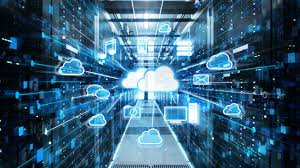
Hardware
Hardware refers to the physical components of a computer system that can be touched, seen, and manipulated. These components are tangible objects that form the foundation of a computer’s functionality. Hardware includes devices such as the central processing unit (CPU), memory modules, storage drives, input devices, output devices, and networking equipment. Each hardware component serves a specific purpose in the computer system and contributes to its overall functionality.
Types of Hardware:
- Central Processing Unit (CPU): The CPU is the brain of the computer, responsible for executing instructions and performing calculations.
- Memory (RAM): Random Access Memory (RAM) is used by the CPU to temporarily store data and program instructions that are actively being used.
- Storage Devices: Storage devices such as hard disk drives (HDDs), solid-state drives (SSDs), and optical drives provide permanent or semi-permanent storage for data and programs.
- Input Devices: Input devices allow users to interact with the computer by providing data or commands. Examples include keyboards, mice, touchpads, and scanners.
- Output Devices: Output devices display information processed by the computer to the user. Examples include monitors, printers, speakers, and projectors.
- Motherboard: The motherboard is the main circuit board of the computer, providing physical connections and pathways for data to flow between components.
- Networking Equipment: Networking hardware such as network interface cards (NICs), routers, switches, and modems enable computers to connect and communicate with each other over networks.
Software
Software refers to the programs, applications, and instructions that tell the computer’s hardware how to perform specific tasks. Unlike hardware, software is intangible and consists of lines of code written in programming languages. Software can be broadly categorized into two main types: system software and application software.
Types of Software:
- System Software: System software includes operating systems, device drivers, utilities, and other software that manages computer hardware resources and provides a platform for running applications.
- Operating System (OS): The operating system is a fundamental piece of system software that controls the computer’s hardware and provides a user interface for interacting with the system.
- Device Drivers: Device drivers are software programs that allow the operating system to communicate with and control hardware devices such as printers, graphics cards, and network adapters.
- Utilities: Utilities are software programs that perform specific tasks to maintain, optimize, or troubleshoot the computer system. Examples include antivirus software, disk cleanup tools, and backup utilities.
- Application Software: Application software includes programs and applications designed to perform specific tasks or meet user needs. Examples include word processors, web browsers, multimedia players, and games.
Key Characteristics of Software:
- Intangible: Software exists as code written in programming languages and cannot be physically touched or seen.
- Instructions: Software provides instructions to the computer’s hardware, telling it how to perform specific tasks or operations.
- User Interface: Application software often includes a user interface that allows users to interact with and control the software’s functionality.
- Flexibility: Software can be modified, updated, and customized to meet changing requirements or address specific user needs.
- Dependency on Hardware: Software relies on hardware components to execute instructions and perform tasks, and hardware components rely on software to provide functionality and control.




